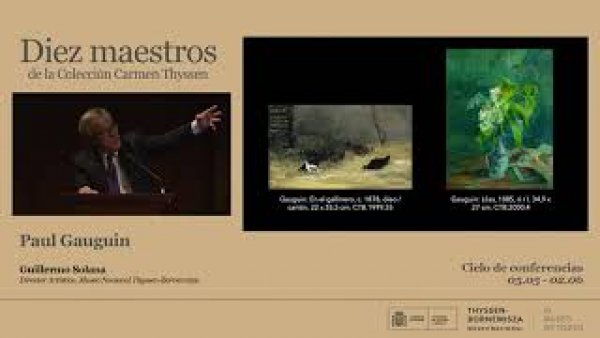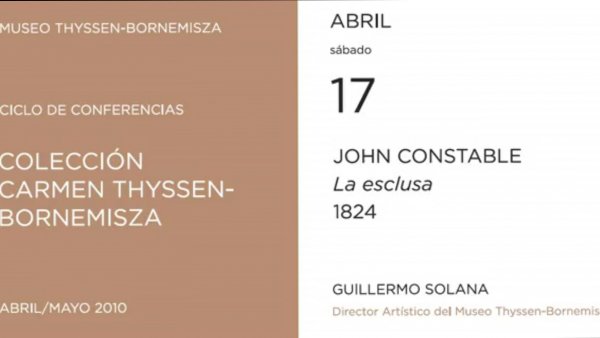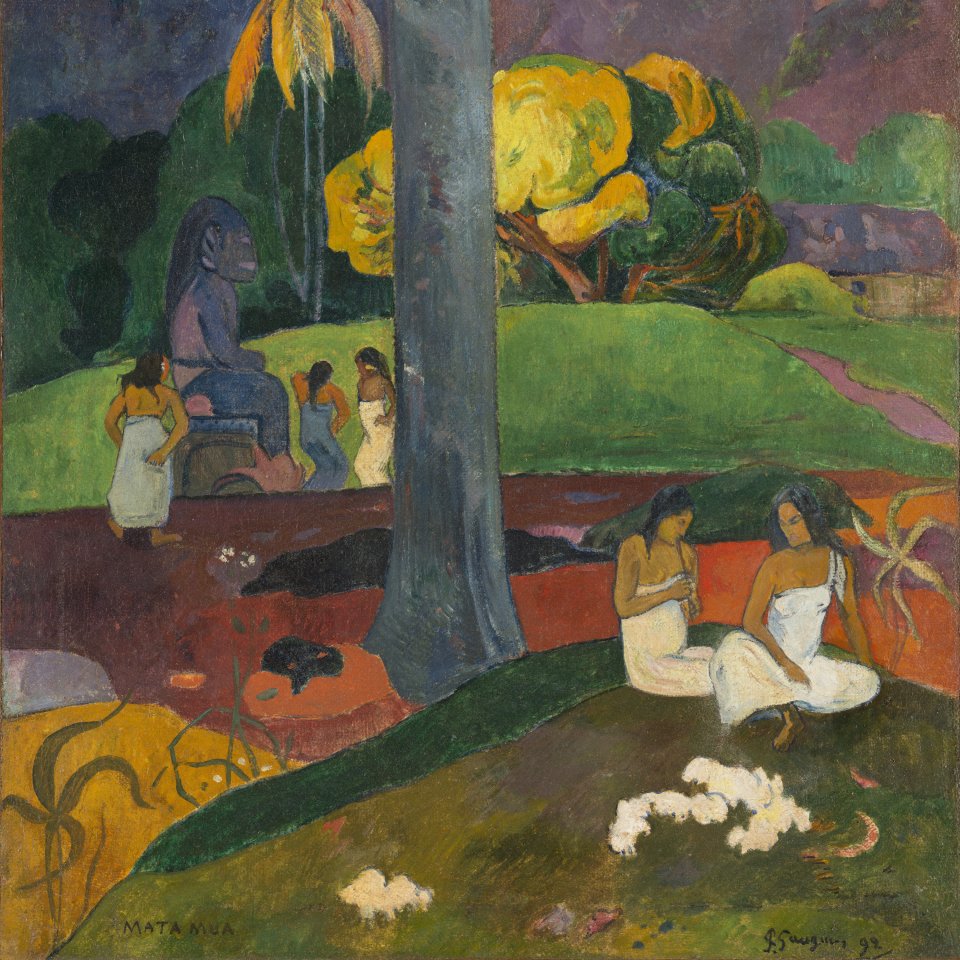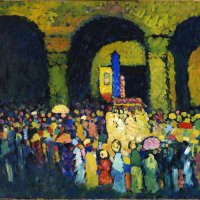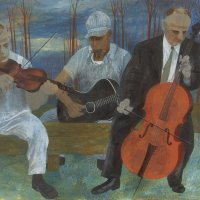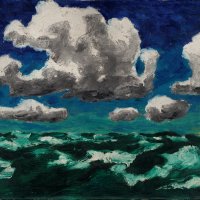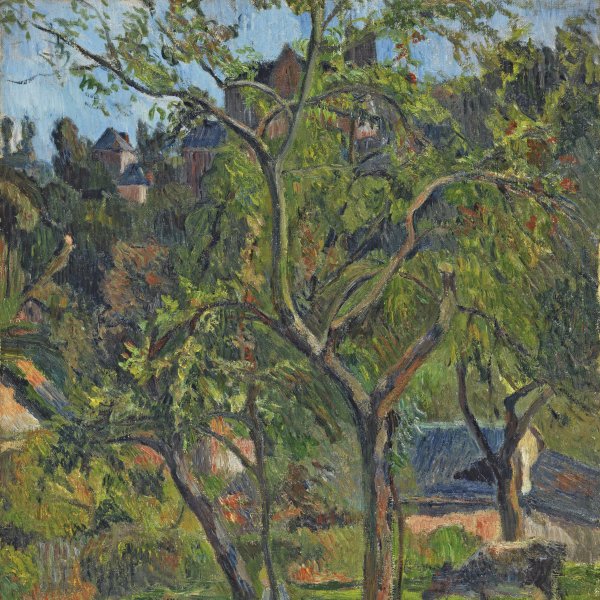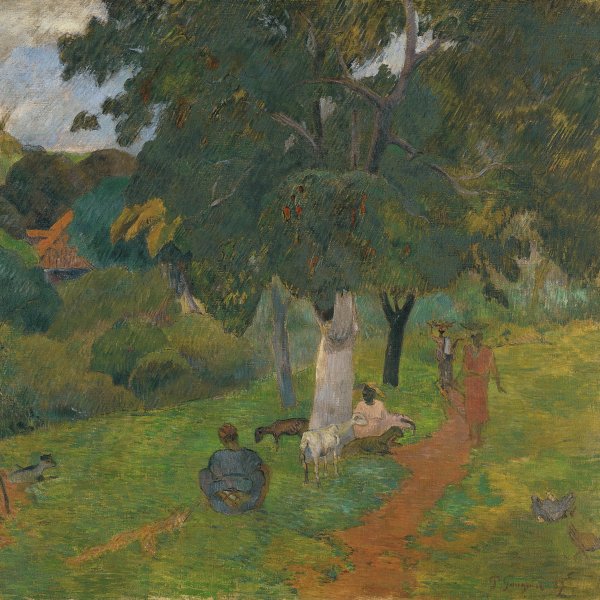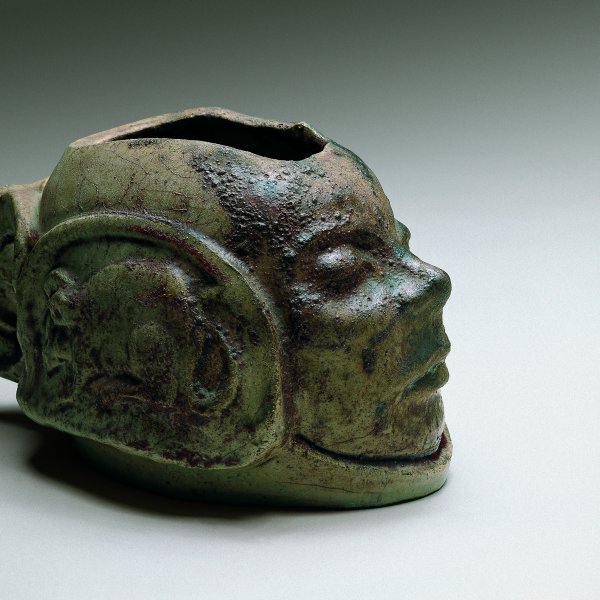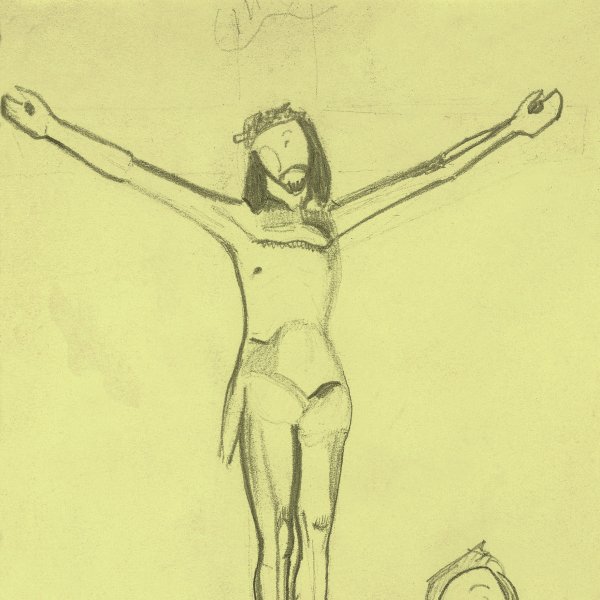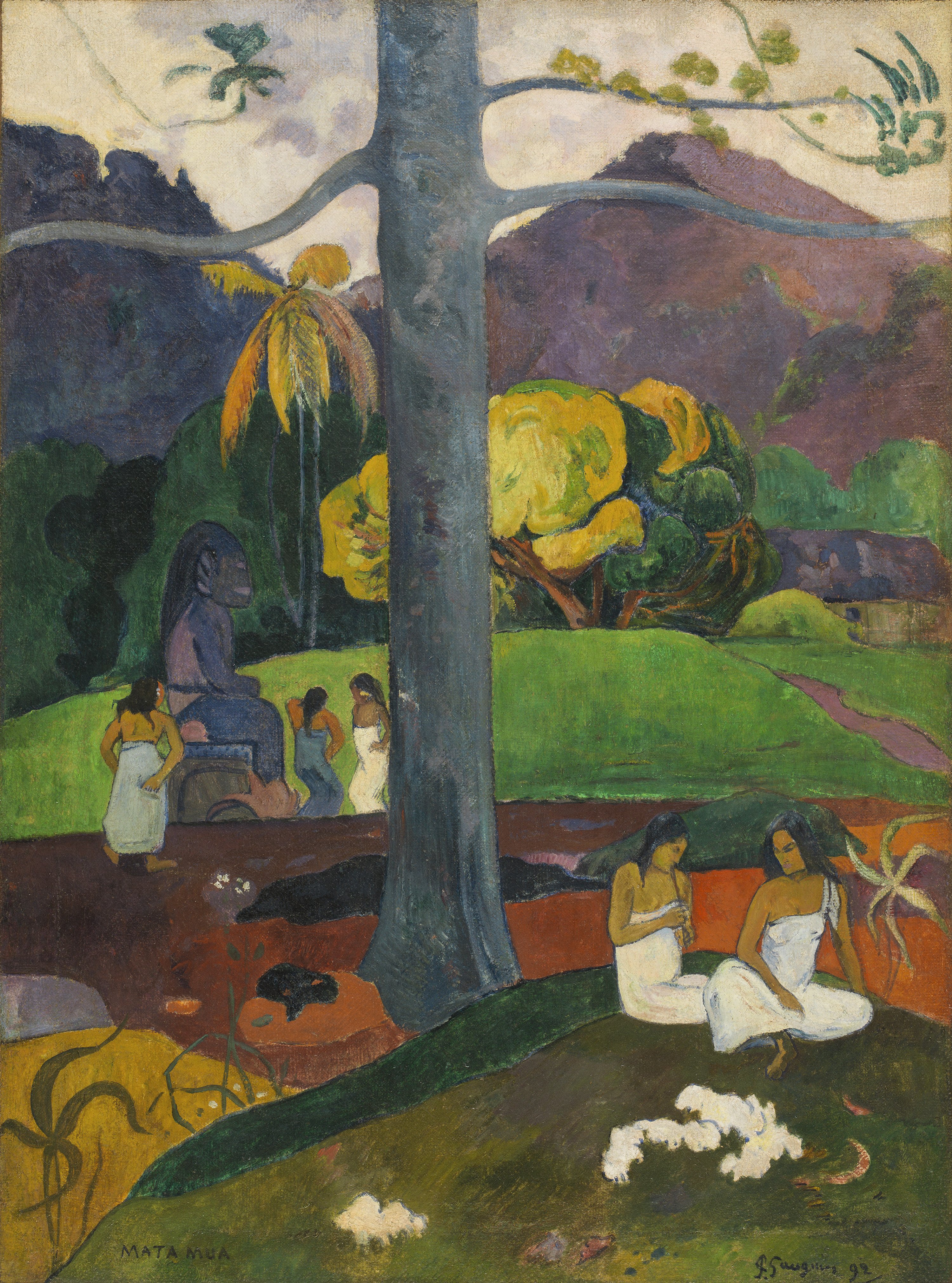Mata Mua (In Olden Times)
In an idyllic landscape enclosed by mountains, a group of women worship Hina, goddess of the moon. In the foreground, a girl plays the flute. To the left, separated by the trunk of a tall tree that splits the composition in two like a hinge, another group dances round the idol. Gauguin left for Tahiti in 1891, hoping to find artistic inspiration among primitive peoples whose development had been untouched by Western civilisation. However, all he encountered were the vestiges of a glorious past, already doomed to extinction. Mata Mua (In Olden Times) is a hymn to the natural lifestyle Gauguin so fervently sought. Painted in bright, flat colours, and rejecting any claim to naturalism, it is also an elegy for a lost Golden Age.
In the month of November 1893, only a few weeks after his return from Tahiti, Gauguin organised an exhibition of his recent works at the Durand-Ruel Gallery, and began writing a text entitled Noa Noa ("Perfumed") in order to explain the meaning of his paintings to a public who knew nothing of the Tahiti customs and the Maori gods. In spite of these precautions, art lovers and journalists were deeply disconcerted by these enigmatic scenes, these paintings with shimmering colours, these flat perspectives and the obscure inscriptions which were the titles of the works. Among the forty-six entries in the catalogue, essentially of paintings made during his stay in the Pacific islands, with the exception of three Breton paintings, was, at number six, Mata Mua (In Olden Times).
In an idyllic landscape, enclosed by pink and purple mountains, some women play the flute and sing before a giant stone idol. They celebrate the goddess Hina (the moon) whom Gauguin also represented in a painting of 1893, Hina Maruru (Feast of Hina), (W 500).
The landscape, made up of interlocking coloured areas covering the entire composition, can be read from bottom to top like a Japanese print. The trunk of a giant tree divides the space into two sections with music in the foreground and dance in the middle ground. The painting is not the transcription of a real scene or landscape, but a re-composition of elements found in other works painted by the artist between 1892 and 1894, for instance, the same landscape serves as a background to Tahiti Pastoral, W 470; the large yellow tree in the background is also present in Fatata te moua (At the Foot of the Mountain) (W 481), and in Nave Nave Moe (The Joy of Resting) (W 512); the idol can be found in Parahi te Marahe (The Temple is There) (W 483), and in Nave Nave Moe (The Joy of Resting) (W 512); as for the dancers only, see Mahana no Atua (The Day of God) (W 513); for the two women sitting, Areareas I and II (Joyfulness) (W 468 and 469); and for the flute player alone, Parau Parau (The Whispered Words) (W 472) and Hina Maruru (Feast of Hina) (W 500).
Gauguin had gone to Tahiti in order to get to know the ancient Maori civilisation, jeopardised by colonisation and Christianisation. He wanted to revive through his paintings those sacred "olden times" in which man lived in harmony with nature and find again, far from Europe, the escaped gods and the original paradise. Shortly after his arrival, he set off on a trip around the island to discover the places still preserved from the corruption and decadence he found in Papeete. "Leaving the path that borders the seashore, I went deep into the thicket which rises quite far into the mountain. Got to a small valley. There some inhabitants want to live as they did in olden times." These few lines, hastily written in the first manuscript of Noa noa, were developed in the final version and are the explanation given by the artist of his painting Mata Mua, a true hymn in the honour of the Maori woman: "In times of richness, social importance, national glory, when the autochthonous race reigned in the Islands and had not yet welcomed the foreigner, in the era of the gods, Matamua! The legend finds its substance everywhere in this naturally fabulous land, but it is the feminine deity Hina, the goddess of lie and pity, who appeals most to those people from the past. The moon has its feasts celebrated with embraces, with Songs, with Dances, celebrated by Nature through ineffable prodigies. [...] The women remain faithful to the dead gods due to an instinctive nostalgia. Their pleasures and terrors always inhabit Matamua. This is how the artist sees the childish and majestic woman, who symbolises an entire ancient race, and he has given her the task to express in the painting the secrets he stole from the extinct cult of which she was both the idol and the priestess, and from nature, of which she is a kind of marvellous synthesis."
The painting, which did not find a buyer in the auction organised by Gauguin in 1895 to finance his second trip to the Pacific islands, was reduced to the price of 500 FF, fixed by the artist. It later became part of Gustave Fayet's collection and then was in the possession of various consecutive private owners before being bought, in May 1984, at a record price and in equal parts, by Baron Hans Heinrich von Thyssen and Jaime Ortiz-Patiño. When, in 1989, the latter decided to sell his share of the painting, Baron Thyssen became its only owner.
Isabelle Cahn
Emotions through art
This artwork is part of a study we conducted to analyze people's emotional responses when observing 125 pieces from the museum.

